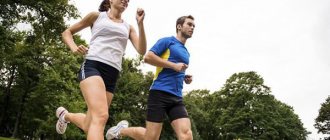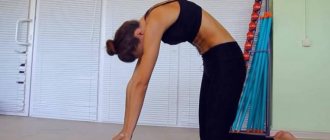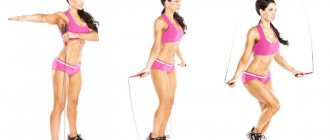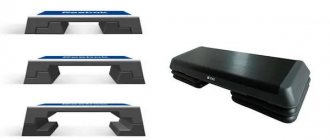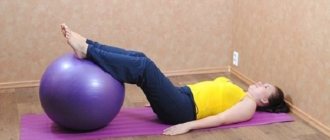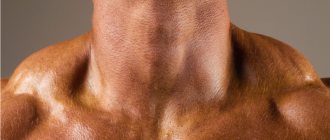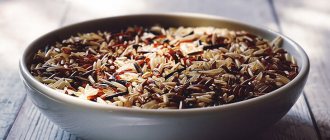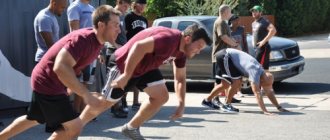The terms are very important in sports and rhythmic gymnastics, as well as in acrobatics and trampoline jumping, since performing the exercises requires precision and mutual understanding between the coach and the athlete. An accurate understanding of special names is positively reflected in the gymnasts' training and final results. In addition to terms denoting movements, equipment and equipment have special names, and there are special rules for the formation of new concepts.
Tips for beginner gymnasts
Gymnastics terminology is very interesting for beginning gymnasts. Senior athletes already habitually say difficult-to-understand phrases from short words, shouting “sed”, “mach” in the hall, and their charges meekly translate them into the most complex body movements. Short - because the tricks are done in groups of several pieces, each element lasts a fraction of a second, and here professional speech is adapted to the difficult everyday life of gymnasts. The terms are taught in sports educational institutions, then they are repeated at qualifications and retraining courses.
But young gymnasts find it difficult to understand complex phrases, and they are in no hurry to explain them. But before novice athletes not only learn sports words and learn to translate them into beautiful and graceful movements, they need to take into account several points that will allow them to practice for a long time while maintaining health.
- Avoid injury at all costs. Please note that under normal conditions the human body is not designed to withstand the force that needs to be applied to perform exercises, so you can get injured at any time. Even minor injuries can mean the end of a career, since absences are very undesirable in gymnastics.
- Don't work hard. In this sport, the most important thing is not strength, not agility or stretching. These qualities are achieved through daily work. The main thing is concentration, it is maximum at the beginning of the lesson and minimal after a tiring workout. Often injuries occur precisely because of distraction at the end of training. For the same reason, do not do difficult exercises when you are exhausted.
- Listen to the coach, but listen to your body. In gymnastics, “shirking” is impossible - after all, results are achieved only through persistent daily training. But there is a category of coaches for whom the result is above all, and athletes, even if they are children, are just consumables. If you understand that performing an exercise is beyond your capabilities or the insurance is insufficient for a complex trick, refuse to perform it. Better preparation, rest, even moving the exercise to the next day will help you learn and implement even complex movements.
- Eat well. Heavy exercise for five hours a day makes it impossible to build up fat deposits. Diets that are aimed at reducing the weight of an athlete are justified to achieve a very short-term result. But over time, the body, limited in food, will begin to weaken, sprains of muscles and ligaments will become frequent, and even fractures are possible. Therefore, for long-term results, you need to develop a diet that is varied and as natural as possible. And under no circumstances take various sports supplements that increase muscle mass, as this will definitely negatively affect your actual strength training.
- Don't even look at doping. Any stimulant substance - alcohol, nicotine, and even modern sports supplements is nothing more than a drug. The body is subject to premature wear and tear and loses strength under the influence of any stimulants, even regular caffeine. Even tea should be drunk in moderation, not to mention coffee. Let the only drug be the adrenaline that is released during exercise.
- The most important advice is to do gymnastics only if you enjoy this activity. Let the pleasure gained from training be an excellent excuse in the face of daily work and inevitable injuries. If you feel that you no longer want to exercise or that it’s unbearable, without a doubt, switch to an activity in which you can achieve greater success - another sport, dancing.
Try to comprehensively study the sport you are involved in, study the theory, safety precautions and it will be easier for you in difficult moments, which are abundant in this sport. Gymnastics is the most difficult sport, it is an activity for the strongest in body and spirit, but it is precisely this feature that forces you to take into account even the smallest details, which seem to refer to just words - terms.
see also
Training principles
The use of various training principles contributes to the complexity of the training process. Constant complication is necessary so that the results do not stand still, but grow all the time. There are many different ones to achieve this goal.
How many repetitions to do in an approach for strength, for mass?
Fewer sets with heavier weights is a strength-training way to train. More approaches with lighter weights - training according to the mass program. How to determine what is better, what training will be more effective? How many.
Why do muscles hurt during and after training?
Muscle pain during the training process is common and is influenced by two main factors, lactic acid and micro-tears in muscle tissue. You shouldn’t be afraid of both, besides.
Terminological requirements
Terms should be easy to understand, so it is advisable that they be built on words of the native language, as well as from borrowed words from another language, but only those that have an international meaning. If you form terms not according to the rules of word formation, as well as from incomprehensible words, then they will not be remembered and will not be perceived by ear.
Also, the terms must accurately convey the action in the exercise, in which case they will improve the interaction between the coach and the athlete and mastering the exercise itself will be faster. An important property is ease of pronunciation; terminological concepts should be brief and easy to pronounce.
In gymnastics and related sports, studying terminology is important while observing safety precautions, so special names in this sport have a big difference in pronunciation, which allows you to avoid misunderstandings even with short, not very clear commands.
The terms are divided into:
- general, which are used for general concepts such as floor exercises, strength exercises;
- the main ones, which are also called specific - they determine the signs of movements, such as hanging, half-turning, turning;
- additional - they specify the way in which the exercise should be performed, the direction of movement - for example, an arc, a kip, you can also supplement them with words characterizing the dynamics - quickly, softly, and so on.
Grips when training with dumbbells.
Dumbbells should always be held with a closed grip. Unlike the barbell, in exercises with dumbbells it is possible to change the grip directly during the exercise; this is often used. Holding the projectile at the starting point with one grip, we change it to another at the end point.
An example of changing between a straight, neutral or reverse grip would be an Arnold press or dumbbell lateral raises where we supinate or pronate the dumbbells as we press to the top. In exercises with dumbbells, the width of the grip is the distance between the hands, which is also customary to change in some exercises, bringing the hands together at the top point and spreading them out at the bottom, for example, when bench pressing dumbbells.
The ability to use these techniques gives dumbbells an advantage over the barbell, which allows for a more diverse impact on the muscles and, ultimately, a beneficial effect on their development.
General developmental and floor exercises
- The starting position is abbreviated as i.p. - this is the position, the stance with which the exercise begins.
- Stance - the main stance is abbreviated as o.s., this is a completely flat position that is characteristic of the formation, there are also other types of stances - legs apart, narrow, crossed, on one knee, on toes, there is also the term “stand up”, in which rise from a kneeling position to a standing position.
- Sed - the athlete sits on the floor, using apparatus. There are such types - simple sitting, legs apart, bent and others.
- Squatting is an exercise done with bent legs. Types - half squat, half squat with an incline, a squat reminiscent of a “swimmer’s start” and others.
- Lunge - the athlete puts his leg in front, which he bends; the weight of the body is transferred to this leg and it becomes the supporting leg. Types - inclined lunge, deep lunge, lunge to the left with an inclination and others.
- Support is the position of the athlete in which the shoulders are above the fulcrum. Types - crouching, lying on the forearms and others.
- Circle - movements of any parts of the body - head, arms, legs, torso along a circular path; the circle can be made both on the mat and above the apparatus.
- Tilt - bending of the body.
- Balance - stand on one leg while maintaining balance - side, back, with grip, splits.
Studying water starts[edit | edit code]
Rice.
6.20. Exercise for learning to start from water (explanations in the text) The main difficulty in learning this start is the phase of the body emerging from the water in a bent position, i.e. with high movement of the lumbar part above the water. To do this, the student needs to master several preparatory exercises.
Exercise No. 1
. IP starting position in water (Fig. 6.20, a). At the teacher’s command, remove your hands from the handrail and at the same time push with your legs. In this case, the body without a flight phase will slide along the surface of the water until it comes to a complete stop. Make sure that the arms, moving forward through the sides, take a comfortable, streamlined position, and the head is located between the arms (Fig. 6.20, b).
Exercise No. 2
. IP starting position in the water. At the teacher’s command, push with your feet and at the same time take your hands away from the handrail and leave them along your body. At the end of the push with your legs, bend at the waist and try to touch the water first with your shoulders or upper back, and then with your pelvis.
Exercise No. 3
. IP the same. But before releasing your hands from the handrail, you need to perform the movements by swinging up and down. During one of the upward movements, remove your hands from the handrail and after a moment finish pushing your legs in the backward direction - upward. Leave your arms along your body and try to bend your lower back as much as possible, achieving the highest position of your pelvis at the moment the kick ends.
The exercise with swinging before the push is pivotal, as it allows you to capture the subtle sensations of coordinating the push off with your legs and the moment of releasing your hands from the handrail because, on the command “march”, the athlete must first, due to the effort of his hands and straightening his legs, rise up, and then, removing his hands from the handrail, push off in the desired direction, subtly measuring the efforts of the arms and legs in the backward and upward direction.
Exercise No. 4
. This exercise is made more difficult by moving your arms forward from the sides. From the IP starting position in the water, movements are performed with less pronounced swinging up and down, followed by straightening the legs and then removing the hands from the handrail. Gradually the student moves on to performing a flight with the body raised high without swinging.
Exercises on apparatus
- The grip is the way the gymnast holds onto the apparatus; there are different types: deep, narrow, wide, closed, reverse, and others.
- Hanging - the gymnast's shoulders are below the grip.
- Emphasis - the gymnast is above the support points.
- Sit is the position in which one sits on the apparatus.
- Recession is a downward movement.
- Lowering is a slow downward movement.
- Turnover - turning the gymnast in a circle around the apparatus axis, done from an emphasis position.
- Rotation is the rotation of the body about a vertical axis.
- Standing position - the gymnast stands with his feet up, supported by his hands or another part of the body.
- Swing - free movement without an axis, variations - bends, force, from a jump.
- Swinging is a repeated swing.
- Arc swing - movement from emphasis to hanging movement in an arc.
- Kach - movement like a pendulum with rings.
- Swinging - repeated swinging.
- Twist - a fixed grip, and subsequent rotation in the joints of the shoulders with a rotation of the body around a horizontal axis.
Types of grip in gymnastics
GRIP in acrobatics - various ways to grab a partner’s hands in pair exercises and pyramids (Fig.).
Varieties of grip
X. in artistic gymnastics - determining the method of holding a gymnast on a gymnastic apparatus. When performing exercises on apparatus, the following Xs are used: from above (thumbs facing inward, and when resting on the uneven bars, forward). This X is not indicated when describing the exercises. Its varieties: deep X. (the hands, bending at the wrist joints, grasp the projectile deeper); X. from below (the position of the brushes is opposite to the previous one); different; (one hand holds the projectile from above, and the other X. from below); reverse X. (thumbs facing outward); crossed X. (arms in a crossed position). In addition to the above, two more Xs are used on the uneven bars: external (the gymnast is inside the bars, the hands clasp the poles of the same name from the outside, fingers pointing inward) and internal (opposite).
Grip in weightlifting
In weightlifting, the distance between the hands when gripping the bar to lift the barbell. There are X. narrow (Fig. a), wide (Fig. b) and medium (Fig. c). The distance between the hands, which characterizes the type of grip, is different in each of the classical exercises. In the bench press, the width of the X is judged by the location of the hands relative to the edges of the deltoid muscles. In a narrow X., the middle fingers are located against the edges of the deltoid muscles; in a medium X., there are thumbs. Wide X. in the bench press is called. such, in which the thumbs are removed from the edges of the deltoid muscles by 5 - 10 or more centimeters. In a two-arm snatch, a narrow X corresponds to a wide X in a bench press; The average X. is considered to be one in which the arms bent with the shoulders moved to the sides form an angle of 90° at the elbow joint; with a wide X. the brushes are located at the inner ends of the neck.
- Encyclopedic dictionary of physical culture and sports. Volume 3. Ch. ed. - G. I. Kukushkin. M., 'Physical education and sport', 1963. 423 p.
Source
Other concepts
Gymnastic terminology also provides for the following concepts:
- swing movements - swing, circle, crossing, entry, transition, exit, flight, dismount, jump, vault, swing;
- acrobatics - roll, tuck, somersault, flip, back flip, flip, rondat, courbet, kip-up, somersault, tempo jump, bridge, split, half-split, stand-up;
- trampoline - swing, jumps;
- rhythmic gymnastics - steps, run, turn, jump, spring movement with arms, wave, wave with arm.
